What year 2015 brought us?

I would like to congratulate all the Khabrovsk citizens with the upcoming New Year and Christmas! Outside the window of our Moscow office, winter is in full swing: there are a lot of puddles and +8 on a thermometer. The year is drawing to a close, and it's time to take stock. We decided to try to remember what appeared so interesting in 2015 in the IT world. And since the IT world is huge, and remember everything- the task is extremely difficult (to be matched except by Schwarzenegger), narrowed their eyes and settled on the following companies: Cisco, HPE, Microsoft and VMware. As it turned out (who would actually doubt), if you try to talk about all the new products of the above companies, you will need to try very hard. But the holidays are coming, and you need to buy gifts, go chop the tree, start cooking olivier. Therefore, we tried to choose only what, in our opinion, was the most significant for us and our customers. In any case, we hope so.
So, enough lyrics, we begin our TOP of solutions / devices / and other trifles that we selected, dividing by manufacturers.

Wireless technology
This year, the company's major wireless innovations revolve around the development of the 802.11ac standard in one way or another. In particular, two new access points were introduced to the market: 1850 and 1830.
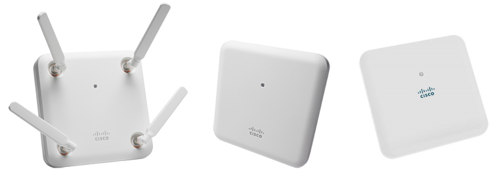
These access points support the so-called second wave (wave 2) development of the 802.11ac standard. The main innovations that appeared at these access points were support for Multi User MIMO and support for the standard beamforming (802.11ac transmit beamforming). As we recall, before this access point could only serve one client (Single User MIMO) at a time, and the proprietary ClientLink technology was responsible for the formation of the radiation pattern (by the way, it is not available in new access points). Another feature worth mentioning was the Mobility Express feature. This feature allows you to use the 1830 or 1850 access point as a wireless network controller. Up to 25 access points are supported (moreover, the controlled access points can be x600, x700 and, Of course, x800). The main difference between the new access points is the MIMO formula: 4x4: 3 (4) for 1850 and 3x3: 2 for 1830.
Another novelty was the 5520 wireless access controller, also closely related to the 802.11ac wave 2 standard. The main advantage of this controller was performance (bandwidth up to 20 Gb / s, a large number of managed access points - 1,500 and clients - 20,000).

Also, the 8540 controller appeared. It is even more productive and designed for very large networks.
The development of the 802.11ac standard is closely related to the increase in data transfer speed. As we recall, wave 1 provides physical data transfer at speeds up to 1.3 Gbit / s, wave 2 - up to 1.7 Gbit / s. At the same time, the channel speed (the useful bandwidth that is of interest to us) is less and amounts to 845 Mbit / s for wave 1 and up to 1.1 Gbit / s for wave 1. Of course, these numbers are still difficult to achieve. For example, to “squeeze” the maximum out of 1850, we will need a client who can receive 4 spatial streams. But it’s already clear: connecting access points to a wired network at a speed of 1 Gbit / s in the future will become a bottleneck. The 1850 access point already has two integrated 1 Gb / s ports. Therefore, Cisco Catalyst Multigigabit technology (based on the NBASE-T standard) began to actively develop. It allows us to transfer data over twisted-pair cable of category 5e / 6 (i.e. use the current cable network) at speeds of 1 Gbit / s, 2.5 Gbit / s, 5 Gbit / s, and 10 Gbit / s. Support for this technology appeared on some models of Catalyst 4500E, 3850 and 3560-CX switches.
Unified Communications
This year, almost all major versions of software products in the UC area (UCM, UCCX, etc.) were updated. Licensing schemes have also been updated for some of them, in particular, for Telepresence (Multiparty Licensing) solutions.
A new platform was introduced for the Business Edition 6000 solution. Now it is possible to implement the BE 6000 on the basis of the Cisco 2921 router with the UCS E160D M2 blade server. BE6000S (that's what it was called) supports up to 150 subscribers. Five UC applications can be launched simultaneously: Unified Communication Manager, Instant Messaging and Presence with the Cisco Jabber, Unity Connection, Prime Collaboration Provisioning, and Paging Server. The new BE6000S may be an alternative to the old Unified Communication Manager Express (UCMe). As you know, the UCMe solution has not been developed for a long time, and the vendor is always recommended to build solutions based on the UCM product.
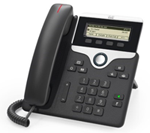
This year the line of phones has replenished. There was a fairly budget (unless, of course, this word is applicable to Cisco products) telephone 7811. It has a built-in two-port switch, a graphic display, a full-duplex speakerphone and a set of necessary dedicated keys. All this is enough to stick a label on it - the applicant for the "standard phone for an ordinary employee."
There are new phones with a built-in camera 8845 and 8865 (HD 720p is supported).

Switches and Routers
Some of the Cisco switch lines have been updated this year. For example, the 3850 switch line has been significantly expanded. There are models with 24 and 48 10 Gb / s ports and models with Multigigabit ports. It became possible to install modules with 40 Gb / s ports on these switches. The new 6840-X fixed configuration switches were also introduced. In terms of functionality, they are comparable to 6807/6880 switches.

Separately, we can mention the appearance of new switches for SMB with 10 Gb / s ports (this sounds, of course, funny: 10 Gb / s for SMB). It's about 350X and 550X switches.
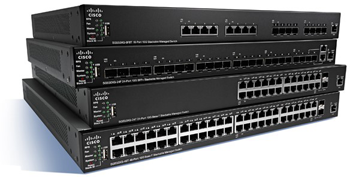
If we talk about routers, then we did not notice any significant changes. I can only note that the list of modules for installation in 4300/4400 routers has expanded.
Data Centers
This year, the Cisco Application Centric Infrastructure (ACI) technology, which is an SDN solution for building data center networks, continued to actively develop. A lot of information materials on this technology have become available.

New Nexus 3200 switches were also introduced. One of the models supports connection at speeds up to 100 Gbit / s (ports can operate at speeds of 10G / 25G / 40G / 50G / 100G). At the same time, the switch is delivered in a fixed configuration.

Security
For many companies, the theme of user traffic control sparkled with new colors in the spring of the outgoing year: on April 14, 2015, Microsoft officially stopped the main support for the Forefront TMG proxy server. Someone prepared for this in advance, and someone
- Managing FirePOWER services through ASDM (of course, with a number of limitations).
- Added SSL decryption for Cisco ASA with FirePOWER Services. Available for the entire ASA 5500-X series. Previously, this feature was only available for Cisco FirePOWER NGIPS Iron Uplays with version 5.4.
- The Captive Portal and Active Authentication appeared. Such functionality can help bypass the existing problem with the authentication of terminal server users. Cisco positions this functionality as an addition to passive authentication using the Sourcefire User Agent.
All this and much more was added to version 6.0 of Firepower services, which became available for download in November this year.
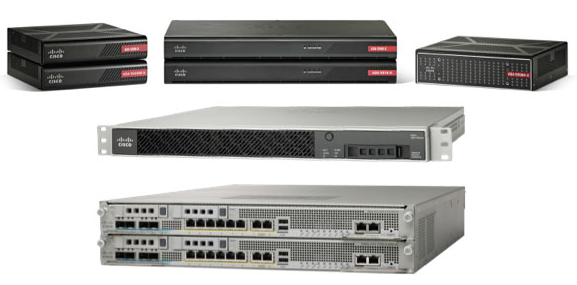
As we have already noted, new ITA ASA models were introduced this year: 5506X, 5508X and 5516X. All these devices are more productive in comparison with their predecessors and differ in that they have a pre-installed SSD-drive. So they are out of the box ready to launch FirePOWER services. New cloud-based security solutions (Cloud Access Security, OpenDNS Umbrella, etc.) were announced, and long-familiar products (ISE, AMP, etc.) were updated.
I would like to note that new items have appeared in other areas. For example, new server models appeared, and the Internet of Things (IoT) solutions continued to actively develop. In general, the updates affected almost all solutions.

I think that readers are already a little saturated with Cisco and it's time to betray the HPE relay.
HPE added the 3Par storage family this year. New 3Par 8000 and 3Par 20000 lines appeared. In fact, this is an update to the current line (they should replace 3Par 7000 and 10000, respectively): a new hardware, more productive. The solutions are built on the updated generation of ASICs (Gen 5), have more efficient processors and more memory (in the context of the cache). The architecture of the controllers of the new storage systems is designed for working with flash-arrays. As an internal bus to disks, SAS 12 Gb / s is now used. And external FC 16 Gb / s ports have become the standard for these systems.
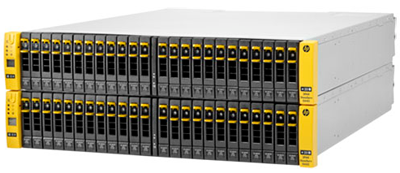
Another new storage solution is the HPE ConvergedSystem 250-HC StoreVirtual. The solution is part of a family of software-defined storage systems. This storage is based on HP ProLiant servers, VMware vSphere or Microsoft Hyper-V virtualization systems, as well as specialized HP StoreVirtual software. The solution consists of three or four nodes. One node supports up to 7.2 TB. I would like to recall that StoreVirtual solutions were previously called LeftHand.

This year, the company continued updating its server lines. This, of course, is about the 9th generation servers (Gen 9). In particular, I would like to draw attention to the new models of the simplest rack-mount servers - DL 20, DL 60 and DL 80. In the current currency exchange rate realities of our country, they can be quite interesting. The DL 60 and DL 80 servers support the installation of up to two processors (Intel Xeon E5-2600 v3) and 256 GB of RAM. True, these servers are equipped with only one power supply.

A significant event this year was the acquisition of Aruba's HPE. In this regard, a large change should undergo a line of wireless solutions. As we all know, Aruba is one of the key players in the wireless market. This vendor also has wired solutions (switches, security solutions, etc.). Therefore, you can expect almost complete "flow" of the Aruba product line into the HPE portfolio.
Aruba introduced the new 320 Series access points that support the 802.11ac wave 2 standard. These access points provide physical layer data for the 5 GHz band at speeds up to 1.7 Gbit / s (using 4 spatial streams). They support Multi User MIMO and Transmit beamforming (TxBF) technologies.

This year, updates have occurred in almost all HPE solutions. For example, the line of backup equipment was updated and supplemented (LTO-7 support appeared). The HPE Synergy system was announced: it combines network and computing components, storage and management software (a kind of blade server) in one package. Updated server solutions for demanding computing (including Big Data) - HP Apollo and HP Integrity Superdome X. New switches appeared and continued the active development of software-defined networks (SDN).
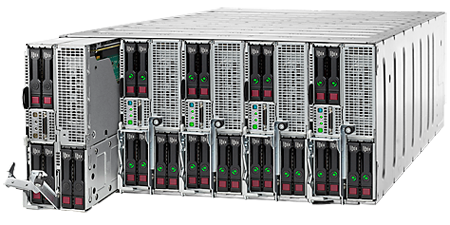
Separately, we would like to note the new line of HPE Altoline switches. They are primarily designed for installation in the data center (they have 10 Gbit / s and 40 Gbit / s ports). These switches are a disaggregated solution for open networks (Open Networking). And this means that we can install any network operating system on this switch. For example, this line is fully compatible with Cumulus Networks Linux NOS.


Now let's move on to the latest Microsoft products.
This year, Microsoft released a new version of its client operating system. A cross-platform feature has become a feature of Windows 10: now we have a unified OS, both for the Xbox One console, a smartphone, and for a regular PC. This should simplify the development of universal applications (Universal Apps) for the new OS (once developed and works everywhere).
A new version of the Exchange Server 2016 corporate mail system was also introduced this year and differs from its predecessor in an updated architecture. Exchange Server 2016 was initially available in the cloud. In general, the current policy of the company is such that at first the products appear in the cloud and only then in the form of an on-premise solution. This year has confirmed this thesis.
 In addition, Microsoft did not forget about its Microsoft Lync unified communications platform, which was not only updated to the new version, but also changed its name to Skype for Business. Over the past year, new Skype for Business mobile clients have been released for all major platforms (Windows Mobile, iOS, Android). The desktop client was updated as part of Office 2016, which combined the possibilities of creating quick meetings, conducting demonstrations and training, and improving the user interface. The Skype for Business solution has a tighter integration with Skype services (now you can call and write them from the Skype for Business corporate client) and the ability to combine various video conferencing systems.
In addition, Microsoft did not forget about its Microsoft Lync unified communications platform, which was not only updated to the new version, but also changed its name to Skype for Business. Over the past year, new Skype for Business mobile clients have been released for all major platforms (Windows Mobile, iOS, Android). The desktop client was updated as part of Office 2016, which combined the possibilities of creating quick meetings, conducting demonstrations and training, and improving the user interface. The Skype for Business solution has a tighter integration with Skype services (now you can call and write them from the Skype for Business corporate client) and the ability to combine various video conferencing systems.Also this year we saw an updated Office 2016, including Office 2016 updated for Mac OS X (the previous release was already in 2010). An updated version of Visual Studio 2015 was introduced.
Microsoft announced the appearance of two more significant products (moreover, there is already a technical preview): the server operating system Windows Server 2016 and the updated family of products System Center 2016. The
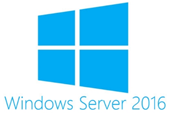
new server operating system promises to be quite interesting, especially in virtualization plan (Nano Server, Windows Server and Hyper-V containers will appear, nested virtualization, the upgrade scheme for Hyper-V clusters, Storage Spaces Direct, etc. will be improved).
I would like to note that with the advent of Satya Nadella, Microsoft soared into the clouds and continues to soar there. Over the past year, most of the updates were related specifically to cloud platforms (the company's current motto is cloud first, mobile first). Significant updates touched Office 365 (Azure ExpressRoute, Mobile Device Management, PowerBI, etc.), expanded the capabilities of Microsoft Intune, Mobile Application Management and Azure.

This year, Vmware introduced the sixth version of its vSphere product. Of the most interesting innovations of this version, the following can be distinguished:
- Implemented the long-awaited support for continuous availability (Fault Tolerance) for virtual machines with 4 vCPU. True, there is an unpleasant moment - for this you need the maximum edition of vSphere Enterprise Plus. For Standard and Enterprise editions, Fault Tolerance can be enabled only for VMs with 2 vCPU;
- Virtual Volumes (VVols) is a new storage principle and an alternative to the VMFS file system. In the future, perhaps VMware will be able to abandon vmfs volumes in favor of Vvols. The vendor himself describes the new concept: “The vSphere Virtual Volumes solution is a new integration and management structure that enables the virtualization of SAN and NAS arrays by creating an efficient operational model that is optimized for virtualized environments and focused on application features rather than infrastructure.”;
- Support for instant clones (Instant Clone): the operation is performed 10 times faster than in previous versions;
- Improved migration scheme of virtual machines with configured replication between sites (Replication-Assisted vMotion);
- The ability to migrate virtual machines between vCenter's (Cross vCenter Migration). Quite useful functionality for those who have a geographically distributed vSphere infrastructure from several vCenter servers.
Other products were also updated this year: Horizon View, Site Recovery Manager, etc.

This year was full of new developments. Not everything, of course, appeared on the shelves of stores in our country. They just managed to inform about something, something else is being certified. Some solutions are already actively used.
We tried to note those moments that seemed to us significant or just deserving of attention. If we missed something important, you can always indicate this in the comments.
Ahead of the holidays and the new 2016, in which we will see even more new solutions, technologies and products. In any case, let's hope so.
Once again, we sincerely wish you a Happy New Year!
Let all the plans conceived always be carried out, difficulties bypass, and good luck helps in all endeavors.
We wish you good health, joyful mood, well-being in the family and success in your work!
